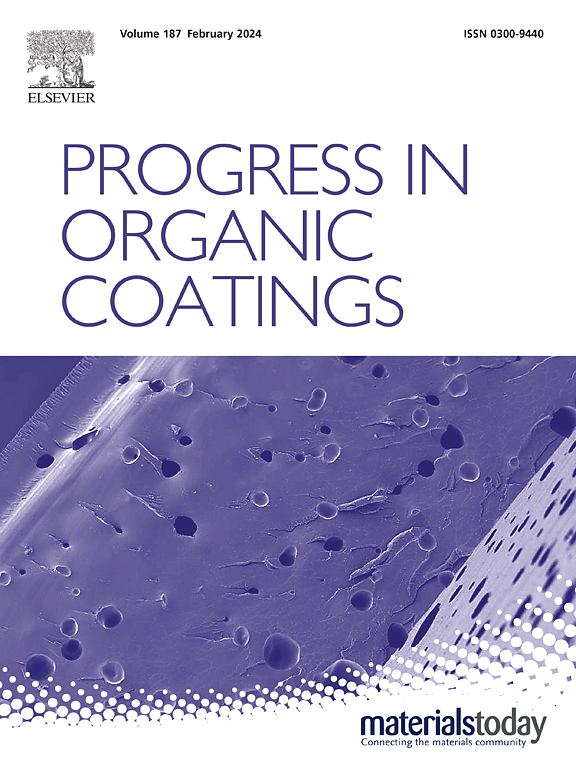Corrosion protection of carbon steel by water-borne resin modified by reduced-graphene oxide
IF 6.5
2区 材料科学
Q1 CHEMISTRY, APPLIED
引用次数: 0
Abstract
A significant constraint concerning the utilisation of reduced graphene oxide (rGO) as pigment in water-based resins resides in its pronounced tendency to agglomerate. The present study proposes the employment of sodium cholate (NaCh) not solely as a dispersant but also as a green reducing agent of graphene oxide. The stability of the suspension was validated through zeta potential measurements, and functionalised rGO nanosheets with an approximative size of 500 nm were confirmed.
The barrier properties of the doped films were evaluated by electrochemical impedance spectroscopy, both on the free films and on those applied on carbon steel. The results obtained from both experiments demonstrated a consistent pattern. Very high impedance values were obtained for undoped resin and when doped with 0.05 wt%, 0.1 wt% and 0.2 wt% rGO, confirming the uniform dispersion of the particles within the resin. A model was developed to analyse the electrolyte uptake in the free films, which accounted for the heterogeneity of the films, with two clearly differentiated kinetics. When these films were applied on carbon steel, they also exhibited good barrier properties in 0.6 M NaCl during long immersion periods. In a more aggressive medium, a 5 M HNO3 solution, the best performance was observed for the resin doped with 0.1 wt% and 0.2 wt% rGO, presumably due to the chemical resistance of the rGO.
The highest concentration, 0.5 wt% rGO, exhibited a rapid decrease in impedance values from the initial immersion time. This behaviour was attributed to the disruption of the polymeric network formation by the high amount of particles, resulting in a defective film. To facilitate the interpretation of the impedance spectra recorded for 0.5 wt% rGO, the Distribution of Relaxation Times (DRT) approach was employed, resulting in the proposal of a novel electrical equivalent circuit.
求助全文
约1分钟内获得全文
求助全文
来源期刊

Progress in Organic Coatings
工程技术-材料科学:膜
CiteScore
11.40
自引率
15.20%
发文量
577
审稿时长
48 days
期刊介绍:
The aim of this international journal is to analyse and publicise the progress and current state of knowledge in the field of organic coatings and related materials. The Editors and the Editorial Board members will solicit both review and research papers from academic and industrial scientists who are actively engaged in research and development or, in the case of review papers, have extensive experience in the subject to be reviewed. Unsolicited manuscripts will be accepted if they meet the journal''s requirements. The journal publishes papers dealing with such subjects as:
• Chemical, physical and technological properties of organic coatings and related materials
• Problems and methods of preparation, manufacture and application of these materials
• Performance, testing and analysis.
 求助内容:
求助内容: 应助结果提醒方式:
应助结果提醒方式:


